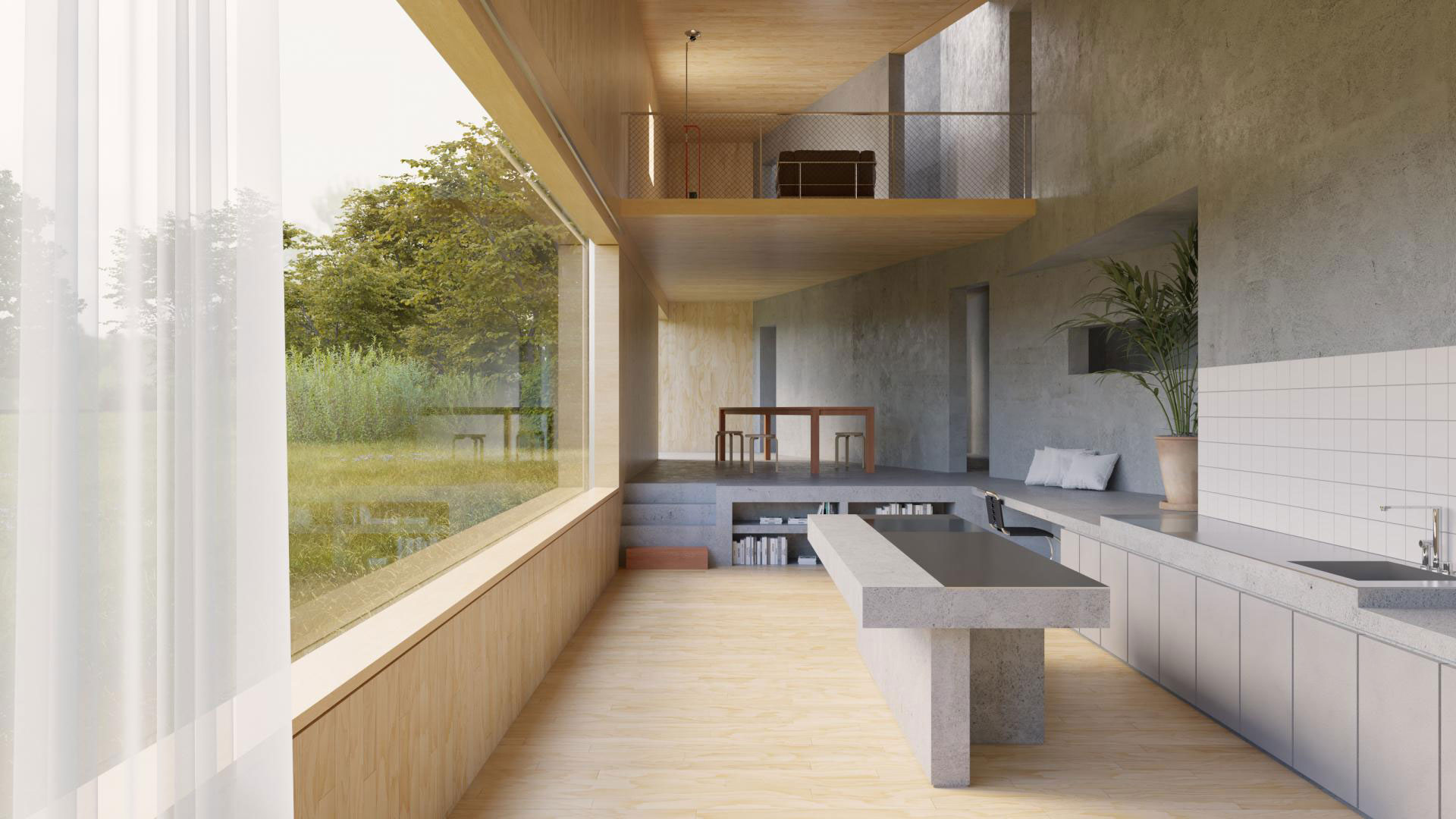Junfu Cui & the Geometry of Shared Living for X House

Discover HE by Meichen Liu – A Tea Set that Bridges Generations
May 6, 2025
Mayor Chang San-cheng Leads A New Vision for Cultural & Landscape Integration
May 6, 2025Junfu Cui
Junfu Cui focuses on large-scale developments but has a deep personal interest in small houses where every detail tells a story. X House reflects that passion—a unique residence for two artist families, shaped by an “X” layout that balances privacy, shared space, and artistic flow.
Thank you! I’m honored to receive the MUSE Design Awards. My name is Junfu Cui, and I graduated from Cornell University, where I developed a deep appreciation for both the technical and artistic aspects of architecture.
My passion for design started at an early age—I was always fascinated by the way spaces shape human experiences. Over time, I became particularly intrigued by the balance between functionality and aesthetics, whether in grand, complex structures or intimate, small-scale projects.
While my professional work focuses on large-scale developments, I also have a strong personal interest in designing small houses, where every detail matters and storytelling through architecture becomes even more profound.
To me, design is not just about creating structures; it’s about crafting meaningful spaces that inspire and improve lives.
Being recognized in the MUSE Design Awards is an incredible honor and a meaningful milestone in my journey as an architect. It validates the dedication, creativity, and thoughtfulness that went into my designs. More importantly, it reinforces my belief in the power of architecture—whether large-scale or small—to shape experiences and impact lives.
This recognition also serves as motivation to continue exploring innovative, human-centered design solutions. It inspires me to keep pushing boundaries, refining my craft, and pursuing projects that blend functionality with beauty in meaningful ways.
Winning the MUSE Design Awards has been an incredibly rewarding experience. It reinforces my belief in thoughtful, well-crafted design and its ability to create meaningful spaces. This recognition has encouraged me to continue refining my approach, particularly in exploring the balance between functionality, aesthetics, and human experience.
It has also opened new opportunities for collaboration and dialogue within the design community. Beyond that, it serves as a reminder to keep pushing creative boundaries and stay true to my passion for designing spaces that resonate with people on a deeper level.
Experimentation plays a crucial role in my design process, allowing me to challenge conventional layouts and rethink spatial relationships. X House is a great example of this approach. Designed for two artists and their families, the project explores a new way of communal living while maintaining privacy.
By cutting the floor plan into an "X" shape, I experimented with how circulation, interaction, and natural light could shape daily life. The crossing point of the "X" not only serves as the entrance but also creates a dynamic space where movement, light, and glimpses of daily activities connect both families.
This experimental approach helped balance shared and private spaces in a way that feels natural and fluid.
Inspiration can come from unexpected places, and one of the most unusual sources for me was the concept of a crossroads. For X House, I was fascinated by how intersections—whether in urban planning, nature, or even human relationships—create moments of connection and transition.
This idea led to the “X” shape of the house, where two families share common spaces while maintaining their own private paths. The crossing point became more than just a circulation node—it became a space where natural light, movement, and interaction subtly weave together, shaping the rhythm of daily life.
I wish more people understood that the design process is not just about aesthetics or form—it’s about problem-solving, iteration, and storytelling. Good design isn’t created in a single stroke; it evolves through exploration, testing, and refining ideas.
For example, in X House, the "X" shape wasn’t just a visual decision but a response to a specific challenge: how to balance privacy and interaction for two families. It took multiple iterations to refine the circulation, light flow, and spatial relationships to create a home that feels both connected and personal.
Design is a dynamic process that requires both creativity and precision to craft spaces that truly enhance the way people live.
One of the main challenges in designing X House was balancing privacy with shared spaces for two families. The goal was to foster interaction between the artists while ensuring that each family maintained a sense of personal space.
Through iteration and testing, the design evolved into a solution where architecture itself became the mediator between separation and connection.
When I hit a creative block, I step away from the problem and seek inspiration outside of architecture. Sometimes, that means immersing myself in art, film, or literature—seeing how other disciplines approach composition, rhythm, and storytelling often sparks new ideas.
Travel and observing everyday spaces also help. A simple walk through a city, watching how people interact with their environment, or studying natural patterns can lead to unexpected design solutions. For X House, the idea of intersections and movement in both urban and organic forms helped shape the concept.
Most importantly, I’ve learned to embrace creative blocks as part of the process. Taking a step back often allows ideas to resurface with greater clarity.
I believe architecture should create meaningful experiences, foster connections, and respond to the way people truly live. My designs are guided by a balance between structure and fluidity—spaces should be both well-defined and adaptable to change over time.
Ultimately, I strive to design spaces that feel intuitive, inviting, and enriching—where architecture enhances life rather than just framing it.
Stay curious, experiment fearlessly, and trust the process. Design is not just about creating something visually striking—it’s about solving problems, telling stories, and shaping experiences. The most compelling ideas often come from questioning assumptions and exploring unconventional solutions.
Also, don’t be afraid of iteration. Every great design goes through multiple refinements, and setbacks are part of the journey. For X House, the final "X" layout emerged after exploring many different spatial arrangements. Embracing that evolution is key to developing strong, meaningful designs.
Most importantly, stay true to your vision while remaining open to learning. Architecture is a continuous dialogue between creativity, function, and people—success comes from finding your own voice within that conversation.
If I could collaborate with any designer, it would be Alvar Aalto. His ability to blend modernism with warmth, natural materials, and human-centered design is something I deeply admire. Aalto’s work wasn’t just about aesthetics; it was about creating spaces that feel intuitive, comfortable, and deeply connected to their surroundings.
His approach to integrating light, circulation, and organic forms resonates with my own design philosophy. In projects like X House, I explore how spatial flow and natural light can shape experiences, much like Aalto did in his designs. Collaborating with him would be an incredible opportunity to learn how he infused emotion and functionality into every detail.
I wish people would ask: “How do you want people to feel in the spaces you design?”
My answer would be that I want people to feel a sense of balance—between connection and solitude, openness and intimacy, structure and flexibility. Architecture isn’t just about how a space looks, but how it shapes experiences and emotions.
Junfu Cui
Junfu Cui focuses on large-scale developments but has a deep personal interest in small houses where every detail tells a story. X House reflects that passion—a unique residence for two artist families, shaped by an “X” layout that balances privacy, shared space, and artistic flow.
Explore the journey of Andre Teh-hsi Chen, the Gold Winner of the 2025 MUSE Design Awards. He’s an Art Director who blends nature, innovation, and imagination, using visuals to tell compelling stories. His award-winning designs for the Super Star National Sports Performance Event and the Pacific Hot Spring Festival captured each event’s essence with striking, meaningful visuals.



